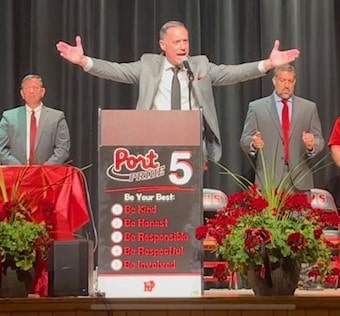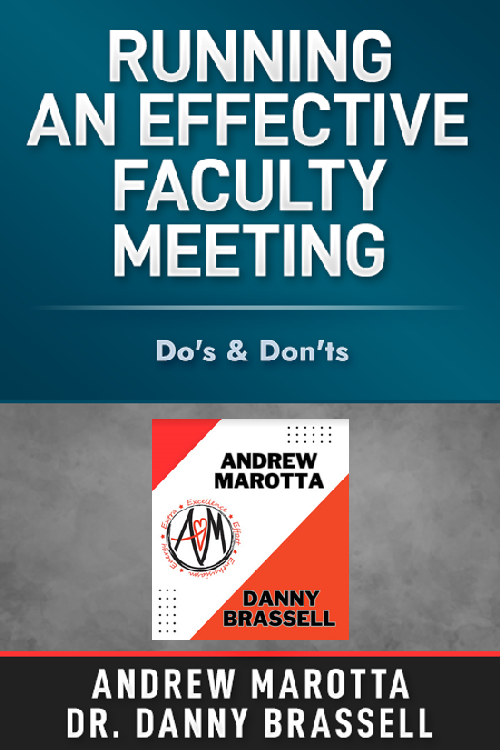Navigating faculty meetings can be a tightrope walk for school leaders. Balancing the necessity of conveying crucial information while keeping your audience engaged is an art and no easy feat. So how can you ensure your faculty meetings are more meaningful and effective? School leadership experts Andrew Marotta and Dr. Danny Brassell share their unique perspectives for school leaders looking to refine their approach to these crucial gatherings.
The Essence of Effective Meetings
At the heart of every successful faculty meeting lies the art of management. As Andrew Marotta puts it, “You’re on stage. You’re in the bright lights and your staff is looking at you, and you need to deliver.” This statement encapsulates the essence of a faculty meeting—a performance that requires both preparation and presence.
To excel in this performance, focus on presence and delivery, ensuring your content is relevant and engaging. The way you present yourself sets the tone. Avoid monotony at all costs, and make sure that the content is not only relevant but also valuable to your audience.
The Do’s and Don’ts

Understanding the do’s and don’ts is pivotal in mastering faculty meetings. Dr. Danny Brassell emphasizes the importance of time management, “Make sure that you’re always starting and ending on time.” This simple yet effective advice resonates with the essence of respect for others’ time. Let’s delve deeper into these pivotal points:
The Do’s:
- Do Encourage Participation – Make it interactive and inclusive.
- Do Start and End on Time – Respect everyone’s time.
- Do Set Clear Goals – Have a defined agenda for every meeting.
The Don’ts:
- Don’t Lack Enthusiasm – Don’t be the “Bueller, Bueller” presenter.
- Don’t Surprise Your Staff – Keep the staff informed about the agenda.
- Don’t Have Long Meetings – Lengthy meetings can be counterproductive.
The Power of Engagement
Engagement isn’t just about keeping the audience awake; it’s about making them a part of the journey. As Andrew insightfully notes, “Don’t talk the whole time. They don’t want to hear from you the whole time.” This principle is about shifting the focus from a monologue to a dialogue, and here’s how you can achieve it:
- Diverse Voices – Invite different staff members to speak.
- Interactive Activities – Break the monotony with group activities or discussions.
- Personalization – Address individuals and their contributions.
Embracing Flexibility and Adaptability
Flexibility in approach and content can significantly enhance the effectiveness of faculty meetings. Dr. Brassell’s advice, “If you don’t know where you’re going, any road will do,” highlights the importance of having a clear direction yet being adaptable to changes. Incorporate these tips for a more dynamic meeting:
- Adapt to Needs – Tailor the meeting according to the staff’s current concerns.
- Innovate in Delivery – Experiment with different formats and techniques.
- Be Open to Feedback – Encourage and act upon feedback from staff members.
Transforming Faculty Meetings
The mastery of faculty meetings is an ongoing process of learning and adapting. Whether you’re a seasoned leader or a novice, the insights shared by Andrew Marotta and Dr. Danny Brassell in “Running an Effective Faculty Meeting: Do’s & Don’ts” can be a guiding light for anyone in school leadership. By embracing these principles, we can transform faculty meetings from mundane obligations to dynamic, engaging, and purposeful gatherings.
Remember, as school leaders, it’s not just about what we say in these meetings; it’s about the environment we create and the participation we foster. Let’s keep evolving, keep engaging, and most importantly, keep inspiring our teams.
Interested in learning more about how you can set yourself and school leaders up for success?
Check out Responsive Learning’s School Leadership Academy.


